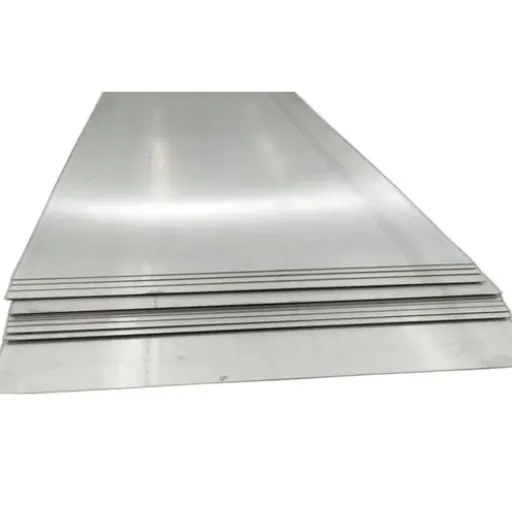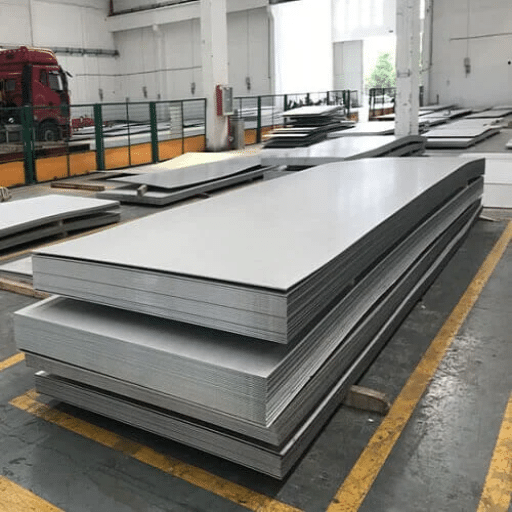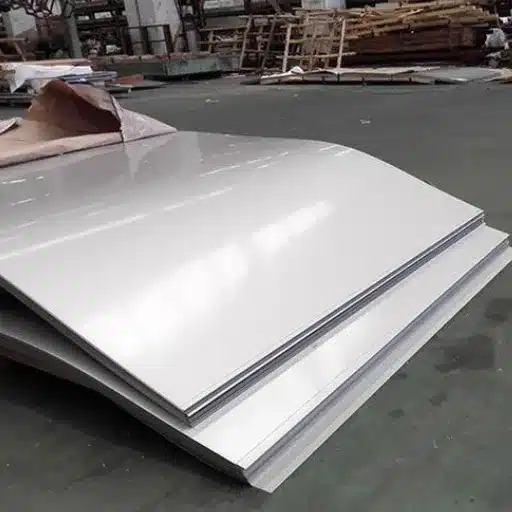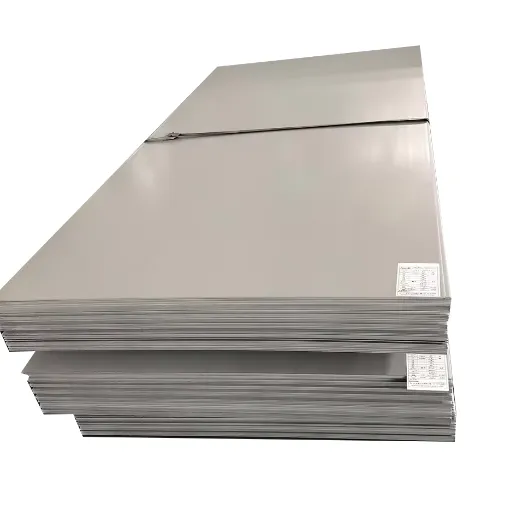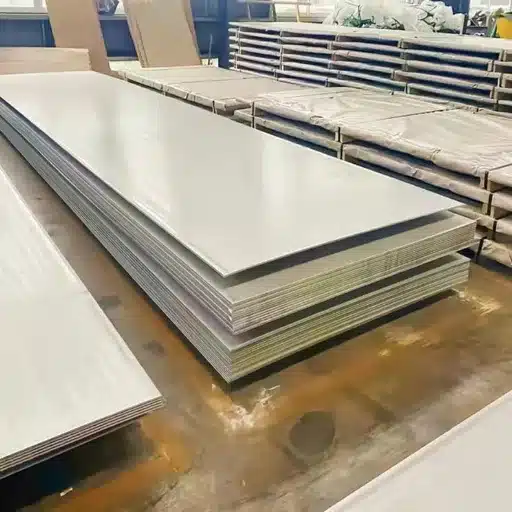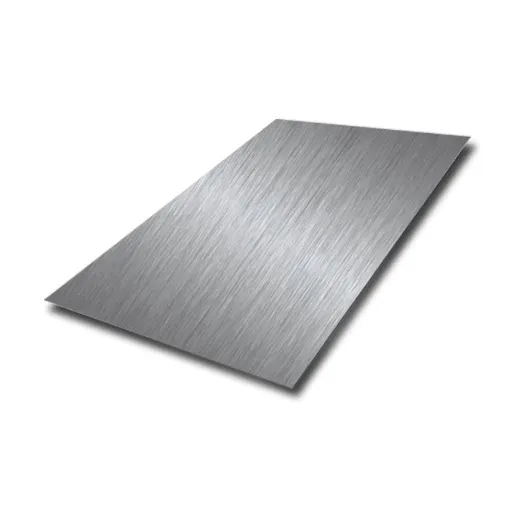Obtaining the right kind of steel for a project is essential and thus one must understand the differences between carbon steel and mild steel. They tend to look alike, yet because of their different chemistry and properties, they are quite suitable for different usages. Construction, manufacturing, or design, a host of industries all gain from the right material choice, as this directly impacts durability, performance, and cost. This article focuses on examining the defining differences between carbon and mild steels, emphasizing their composition, mechanical properties, applications, and benefits. At the end of this article, you will be able to distinguish which one is fit for your particular purpose.
Composition of Steel Types

It is predominantly iron and carbon, with carbon usually in the range of 0.05% to 2%, sometimes with trace amounts of other elements such as manganese, silicon, and sulphur, used to impart particular properties, like strength or machinability.
Mild steel, or low carbon steel, is a carbon steel that contains up to 0.25% carbon and has a lower carbon content, roughly upwards of 0.05%. Because of its lower carbon level, it is softer and more ductile and finds applications as structural steel, general fabrication, etc.
What is Carbon Steel?
Carbon steel includes all irons and carbons with varied quantities of the latter, giving the classification and characteristics. The major carbon steel types considered are low or mild steel, medium carbon steel, and high carbon steel, classified according to carbon concentration. Low carbon steels with less than 0.25% carbon exhibit high ductility and are easy to fabricate, being applied as structural materials and consumer products. Medium carbon steel contains carbon in the range of 0.25% to 0.60%, providing a fair balance of strength and ductility and is hence used in manufacturing automotive parts and heavy-duty machinery.
In a very high carbon steel, with 0.60 to 1.5% carbon content, it occurs that there is an amazing capacity for strength and wear resistance properties suitable for tools and cutting edges. Trace elements such as manganese are added for increased strength and toughness, whereas silicon may be increased for the sake of deoxidation of the alloy. In the end, an entire spectrum of usage and applications is available in carbon steel, making it so versatile and cheap to be used in construction, manufacturing, and in many different types of industries.
Understanding Mild Steel
Mild steel consists of low carbon steel. Typically, 0.05%-0.25% carbon is contained by the steel. Such a composition makes the steel super ductile and malleable and the steel can be shaped, machined, and welded very easily. Cold forming or a few amounts of some alloying elements like manganese can improve the strength of mild steel. The obvious benefit of mild steel is its low cost profile, accelerating its mass consumption in the industry.
Mild steel, due to its very good tensile strength and elongation properties, is utilized in construction for structural works such as beams, columns, and reinforcement bars; for pipeline works, automotive body parts, and domestic occupations such as cookware due to its ductility and recyclability. In addition, mild steel’s corrosion resistance will not be prevented compared to other steels, which makes a protective coat or galvanization necessary whenever the material is used. All these features are also the reason for which mild steel has been considered as a base material in the current engineering and manufacturing sectors.
Key Differences Between Carbon Steel and Mild Steel
|
Parameter |
Carbon Steel |
Mild Steel |
|---|---|---|
|
Carbon Content |
Higher, 0.30–2.00% |
Lower, ≤ 0.25% |
|
Strength |
Higher tensile strength |
Lower tensile strength |
|
Ductility |
Less ductile due to higher carbon |
More ductile |
|
Welding Ease |
Difficult to weld |
Easier to weld |
|
Hardness |
Harder with increased brittleness |
Softer and less brittle |
|
Machinability |
More difficult to machine |
Easier to machine |
|
Corrosion Resistance |
Higher due to stronger protective coatings |
Lower, needs additional protection |
|
Cost |
More expensive |
Less expensive |
|
Applications |
Tools, construction, automotive parts |
Pipes, structural materials, cookware |
|
Heat Treatment Response |
Responds better to heat treatment |
Limited response to heat treatment |
Strength and Durability Comparison
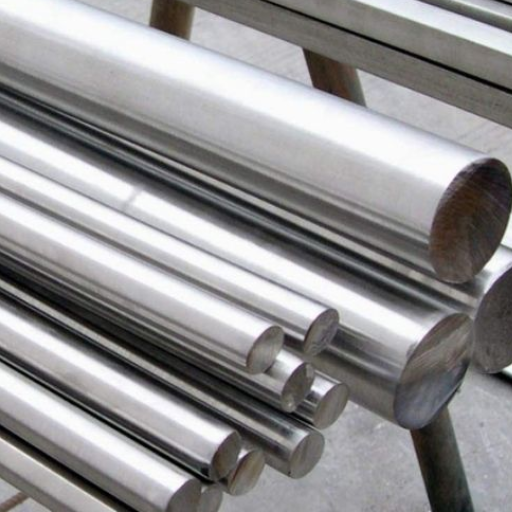
Commonly considered material properties are strength and durability. Strength is the capability of materials to resist an applied force, while durability refers to the resistance of materials against wear with the passage of time. High-strength materials, with alloy steel as an example, have inevitably higher tensile strength and impact resistance and are thus used for building and heavy machinery. These steels resist structural deformation under heavy loads, but are mostly a costly option and may require surface treatment for enhanced durability.
The other classes of steels, normal low-carbon steels, offer sufficient strength under relatively less demanding situations, yet enjoy the ability of increased ductility and less brittleness. While they may, in fact, not give as much performance as the higher grades of steel under extreme circumstances, the increased versatility and lower cost attached to their make them a very reasonable option in mundane structural matters. That choice depends on what is to be made of them and traces of stress, temperature, or environmental factors to which they will be exposed.
Mechanical Properties of Carbon Steel
- Tensile Strength
Carbon steel has a high tensile strength, which is proportional to the carbon content:
- Low carbon steel (0.05% – 0.25% carbon): Tensile strength ranges between 400-550 MPa.
- Medium carbon steel (0.25% – 0.60% carbon): Tensile strength ranges from 550-850 MPa.
- High carbon steel (0.60% – 1.7% carbon): Tensile strength can exceed 850 MPa.
- Yield Strength
Yield strength is the indication of a stress level that induces distortion of plasticity in a loaded material, increasing with carbon content and increases also with the addition of certain alloying elements. It is usually between 250-350MPa for low carbon steels while in high carbon steels it gets beyond 500 MPa.
- Ductility
The less of carbon content, the more ductile it is. The low carbon steels will show great ductility that allows 25-30% elongation of the steels before it will fracture, unlike the higher carbon steels that are less ductile and peripheral elongation takes less than 10%.
- Hardness
An increase in carbon content can markedly improve hardness through quenching and heat treatment, like tempering. The Rockwell hardness scale (HRB) for normalized carbon steel may go as low as 50 for low carbon steel and above 90 for high carbon steel.
- Impact Resistance
Mild Steel Strength Characteristics
- Tensile Strength
The tensile strength in mild steel usually varies between 400-550 MPa, depending on the composition and heat treatment. The balance of moderate strength without much brittleness makes it an apt grade of steel to be used in situations where mild strength is needed.
- Yield Strength
The yield strength value of mild steel stands generally between 250 MPa and 350 MPa. This value comes into play in the ability of mild steel to experience permanent deformation after considerable strain under applied forces. This property makes it a very versatile steel for the construction and manufacturing industries.
- Elongation Percentage
Mild steel shows excellent ductility with an elongation percentage of about 20-25% before fracture, thus enabling the material to experience considerable plastic deformation before the mechanical failure of the materials occurs, an essential consideration for applications that require bending or shaping.
- Hardness
With a Brinell Hardness Number (BHN) lying in the range of 120-180, mild steel is a soft material and easy to machine-weld yet shows enough resistance to surface indentation through the general usage.
- Shear Strength
Mild steel offers a shear strength of about 200-300 MPa, which bears a proportional relation to tensile strength. This property is very much of importance in sliding force applications acting parallel to a material’s surface.
Cost-Effectiveness of Carbon Steel vs Mild Steel
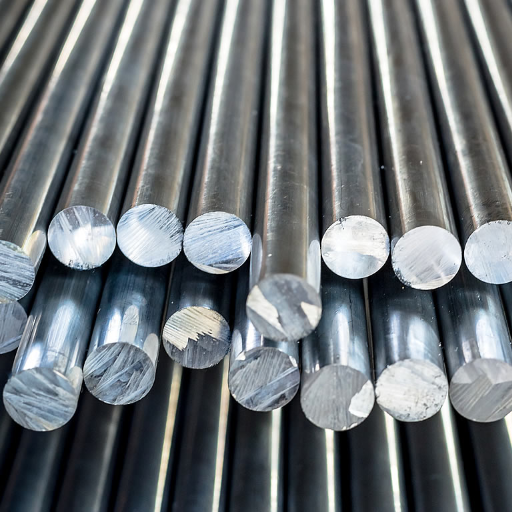
Depending on application and material qualities, cost-effectiveness becomes a disputable domain for both carbon steel and mild steel. Mild steel is less expensive, given that it has lower carbon content, hence considered ideal for projects where high strength is not a necessity, but controlling costs is. Its cheapness for fabrication and welding also cuts down on labor and production costs. While carbon steel is high-priced due to its carbon content, it finds strength, wear resistance, and hardness on the opposite scale. While carbon steel has a high initial price, it provides better price efficiency aspects if durability and long-running applications are what are sought; this is mainly because of minimizing the costs related to maintenance and replacements. Ultimately, the decision should be balanced between costs and the performance level of materials.
Price Analysis of Steel Types
Steel price is influenced by variables, some of which are dynamics in their own good-chaotic set of events, such as global demand, availability of raw material, production costs, and market conditions. Being one of the most used materials, mild steel benefits from economies of scale, which in turn moderates its prices. Recent market studies have shown, with clear reports, that mild steel prices per ton are on average lower compared to carbon steel, just because it is simpler to make and easier to procure.
Carbon steel is more costly, with the addition of alloying elements for increasing strength and wear resistance. To exemplify, the presence of additional carbon in trace quantities, as well as elements such as manganese or chromium, will increase production complexity and materials cost. Those extra costs of carbon steel are well justified when application priorities emphasize initial costs and maintenance cost, especially in construction, automobile, and heavy machinery industries.
Long-Term Cost Considerations
Performance in Various Industries
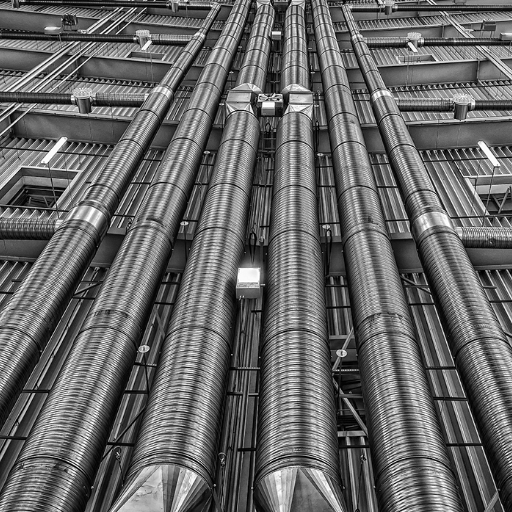
- Construction Industry
- Automotive Industry
Advanced high-strength steels (AHSS) have traditionally been the most sought-after industries for vehicle fabrication; assisting in weight reduction that aids fuel economy and emission controls. On average, manufacturing cars today have 60% steel, where in some cases nearly 25% thereof is recycled steel. Steel absorbs energy during impact, enhancing crash safety and making it indispensable for vehicle design. It has been shown that weight reduction from AHSS equates to a 7% decrease in total vehicle weight.
- Energy Sector
Steel is critical to the energy sector, especially in the construction of wind turbines, pipelines, and power plants. Offshore wind farms require huge tonnage of corrosion-resistant steel to elevate the longevity portion of the concept in order to withstand the actual treatment given by the harsh environment. More or less 140 tons of steel from a single category of steel is used in one wind turbine, and with the upsurge in renewable energy infrastructure, the demand for special steel grades for this exercise has greatly increased. Plus, high-strength steels are required to sustain the pressures involved in modern-day energy pipelines.
- Manufacturing and Heavy Machinery
Steel finds its usefulness in manufacturing for the manufacture of heavy machinery, tools, and equipment, and as a machining material, it accounts for wear resistance, stud reliability, and similar applications.
1Data from industry reports reveal that steel components in machinery account for over 30% of the market, highlighting its central role in sustaining operational performance and longevity.
Applications in Construction
- Structural Components
Stainless steel is used in load-bearing structures such as beams, columns, and reinforcements. They have tensile strength and resistance to weathering so that they are suited for bridges, high-rise buildings, and industrial establishments.
- Cladding and Facades
Stainless steel is an artist’s dream when it comes to exterior cladding. Airports, stadiums, and offices are some of the buildings that feature stainless steel that stands for their modern design and environmental challenge.
- Handrails and Balustrades
The durability and low maintenance of stainless steel make a signal of the region; it is used in handrails, balustrades, and safety barriers design. It is used in public spaces such as parks, shopping malls, and transportation.
- Roofing and Drainage Systems
Stainless steel gutters, downpipes, and roofing sheets are favored for their corrosion provision and efficient water handling, together guaranteeing the drainage system’s longer life as compared to regular materials.
Uses in Manufacturing
- Automotive Industry
Being used extensively for exhaust systems, fuel tanks, and structural components, stainless steel gives added life to the vehicles by withstanding high temperatures and corrosive environments. For example, approximately 12% of stainless steel produced worldwide finds application in the automotive sector.
- Aerospace Industry
With its high strength-to-weight ratio and heat and oxidation resistance, this material finds many applications in both aircraft and spacecraft engineering. Stainless steel is extensively used for jet engines, landing gear, and structural frames as it must perform under extreme conditions. Studies have shown that aerospace grade stainless steel alloys have the ability to resist heat treatment temperature in excess of 1800°F (980°C).
- Construction Equipment
Stainless steel produces manufacturing machinery and equipment such as cranes, bulldozers, and conveyor systems owing to its strength and corrosion resistance. It is most preferred for those components subjected to heavy loads or subjected to outside environmental conditions.
- Medical Device Fabrication
Choosing the Right Steel for Your Project
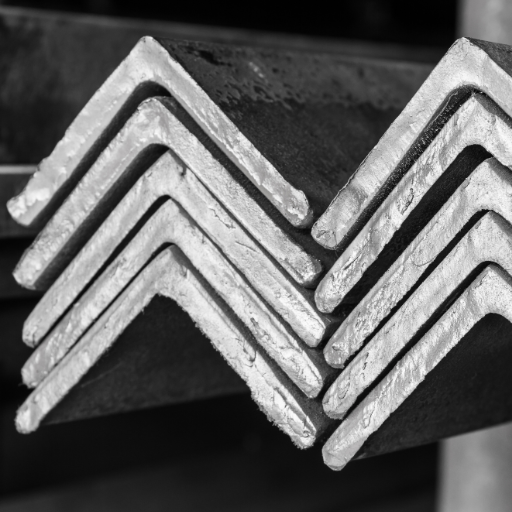
- Mechanical Properties
Determine your strength, hardness, and ductility requirements. For components subject to high stresses, steels with a higher tensile strength are generally ideal, examples of which are carbon or alloy steels.
- Corrosion Resistance
Projects in violent weather conditions or chemical or marine environments require a resistant-alloy material that could be stainless steel. Consider grades such as 304 or 316 for a better performance.
- Temperature Resistance
If your workings go to very high or very low temperatures, then heat-resistant steels such as stainless steels or certain alloy steels will be vital to ensure that it lasts and will not deform.
- Fabrication Requirements
Consider machinability and weldability. High-carbon steels offer more strength but are harder welding or machining than low-carbon steels, which are also easier to fabricate.
Load Requirements and Machining Capabilities
Load requirements, together with machinability, are critical in the determination of steel grades for their use. High-load applications need a steel with the feature of superior tensile strength, like medium or high carbon steels or alloy steels, chromium, molybdenum, or vanadium to give them the extra performance they are supposed to have while under stress. Meanwhile, for low-load applications, mild or low-carbon steels of sufficient strength make it economically feasible.
Practical Tips for Selection
- Assess Material Composition and Properties
The chemical constitution of the material should be evaluated, including the elements of the alloying in it, like carbon, chromium, nickel, or molybdenum. For example, the highest carbon content would increase hardness and reduce machinability. To make the best choice, consult material property charts to review tensile strength, hardness, and corrosion resistance.
- Match Material to Application Requirements
Determine the application’s operational demands, such as high load-bearing requirements, thermal exposure, or wear resistance. For instance, in aerospace applications, materials exposed to extremes of heat would entail nickel-based superalloys retaining their properties at these temperatures.
- Consider Machinability Ratings
Machinability ratings, in percentage, are established in relation to a base material like AISI 1212 steel (100% machinability). Higher percent-rated materials, such as free-machining grades with various additives, will reduce manufacturing time and tool wear but may interfere with mechanical strength.
- Account for Manufacturing Costs
Common Misconceptions and Expert Insights
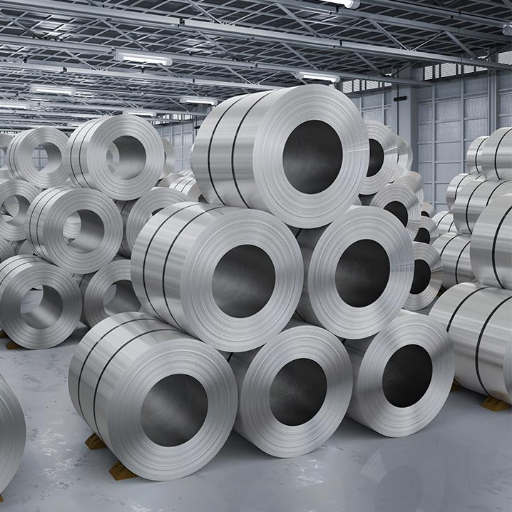
- Misconception: Cost is the Only Factor in Material Selection
While it might be considered an important factor, cost alone is of less consequence in decision-making. Materials chosen should meet current and anticipated performance requirements, durability standards, and government legislation. If any of them fall short, the overall cost will increase in the long run, or else there will be legal penalties.
- Misconception: All Sustainable Materials are More Expensive
This is not always true. The advancement in material science has brought forth cost-effective alternatives for sustainability. For example, the recycled alloys and biodegradable polymers will, in many cases, offer performance comparable to the conventional ones at very competitive costs, especially considering the bigger picture of lifecycle savings.
- Expert Insight: Prioritize Lifecycle Assessment (LCA)
Experts recommend performing an entire lifecycle assessment of a material’s performance, environmental sustainability, and overall cost of ownership. This guarantees a balanced decision based on inequalities of present and future consequences.
- Misconception: Standard Materials Always Meet Regulatory Standards
Local laws dictate considerations by industry and region. Assuming such compatibility risks tremendous legal and operational disadvantages. Cross-check with RoHS, REACH, or whichever other standards are relevant to you before you settle on a particular approach.
Myths About Mild Steel and Carbon Steel
Expert Recommendations for Specific Uses
For automobile parts, alloyed steels like Cr-Mo steels are desirable because they have good tensile strength, corrosion resistance, and good resistance to high temperatures. They find general use in engine parts and structural reinforcements, wherein such parts must often withstand intense mechanical and thermal stress for many hours. There has been an increase in the use of other light materials recently developed, such as high-strength aluminum alloys for vehicle bodies, to improve fuel economy without jeopardizing structural integrity as well.
Reference Sources
-
Analysis of the mechanical characteristics of mild steel using different heat treatment: This study explores the mechanical properties of mild steel (low carbon steel) under various heat treatments. It highlights the versatility of mild steel, which typically contains 0.05% to 0.35% carbon, and its suitability for applications requiring malleability and ductility.
-
Study of surface morphology and inhibition efficiency of mild steel in simulated concrete pore solution by lactic acid–Zn2+ system: This paper examines the corrosion resistance of carbon steel in a simulated concrete pore solution. It evaluates the effectiveness of a lactic acid–Zn2+ system in inhibiting corrosion and improving surface morphology.
-
Effects of carburization with palm kernel shell/coconut shell mixture on the tensile properties and case hardness of low carbon steel: This research investigates the impact of carburization using organic materials (palm kernel and coconut shells) on the tensile strength and hardness of low carbon steel. The study found that carburization significantly enhances the surface hardness and tensile properties of the steel.
Frequently Asked Questions (FAQs)
Q: What is the difference between carbon steel and mild steel?
A: Carbon steel and mild steel differ primarily in their carbon content. Carbon steel generally contains a higher percentage of carbon, typically ranging from 0.05% to 2.0%, while mild steel typically has a carbon content of 0.05% to 0.25%. This difference in carbon levels affects their mechanical properties, with carbon steel being harder and stronger but also more brittle compared to mild steel. Mild steel, on the other hand, is more ductile and malleable, making it easier to work with for various applications. Additionally, mild steel is often less expensive than carbon steel, making it a popular choice for structural applications.
Q: Is carbon steel stronger than mild steel?
A: Yes, carbon steel is generally stronger than mild steel due to its higher carbon content. The increased carbon level in carbon steel enhances its tensile strength and hardness, making it suitable for applications that require resilience and durability. However, this increased strength comes at the cost of reduced ductility, meaning carbon steel can be more prone to cracking or breaking under stress. Mild steel, with its lower carbon content, offers better ductility and is easier to weld and shape, which is why it is often used in construction and manufacturing. The choice between the two depends on the specific requirements of the project, including strength needs and fabrication processes.
Q: Which is more corrosion-resistant, carbon steel or mild steel?
A: Neither carbon steel nor mild steel is inherently corrosion-resistant; both types of steel can rust when exposed to moisture and oxygen. However, the presence of alloying elements can enhance corrosion resistance. For example, stainless steel, which contains chromium, offers significant resistance to rusting. When comparing carbon steel and mild steel, the latter typically has a lower carbon content, which can result in slightly better corrosion resistance in some environments. To improve corrosion resistance for both types of steel, protective coatings or treatments, such as galvanizing, can be applied. Ultimately, the choice between using carbon or mild steel should consider the environmental conditions they will be exposed to.
Q: What are the common applications of carbon steel and mild steel?
A: Carbon steel is commonly used in applications requiring high strength and durability, such as in the manufacturing of tools, machinery, and structural components. It is also used in the production of automotive parts and heavy-duty equipment. Mild steel, due to its excellent weldability and ductility, is often employed in construction for beams, columns, and frames. It is also widely used in the fabrication of furniture, pipes, and metal products. Each type of steel has its unique set of properties that make it suitable for specific applications, so understanding these differences is crucial when selecting materials for a project.
Q: Can mild steel be used for welding compared to carbon steel?
A: Mild steel is generally preferred for welding compared to carbon steel. Its lower carbon content allows for better weldability, reducing the risk of cracking during the welding process. Mild steel can be easily welded using various methods, including MIG, TIG, and arc welding, making it a popular choice in construction and manufacturing. On the other hand, carbon steel, while weldable, may require additional precautions to prevent issues such as warping or cracking due to its higher carbon content. Preheating and post-weld heat treatment may be necessary when welding carbon steel to ensure integrity and performance. Ultimately, the choice of steel will depend on the specific welding requirements and desired outcomes.

